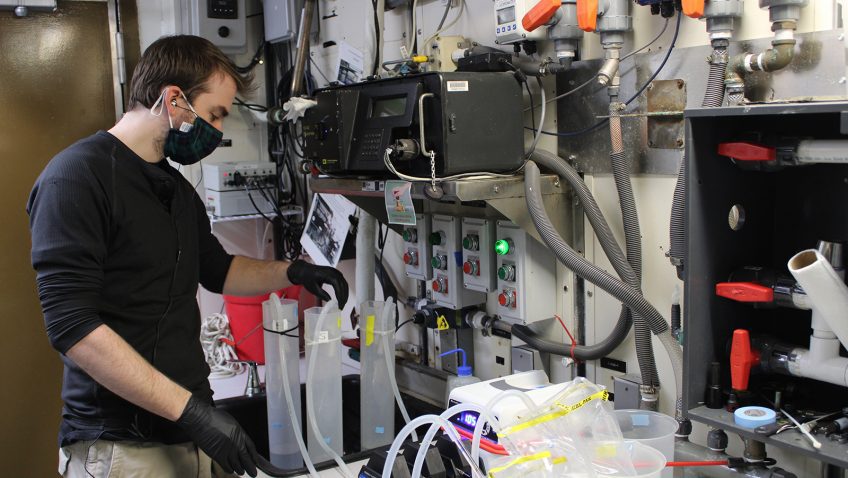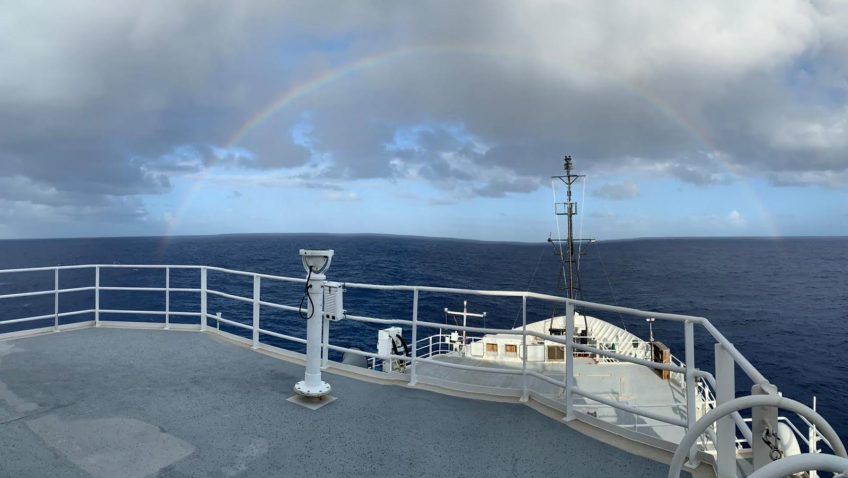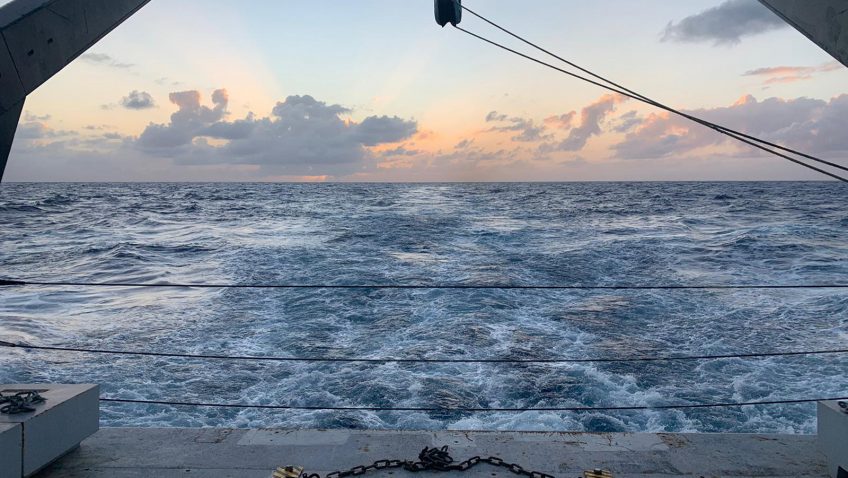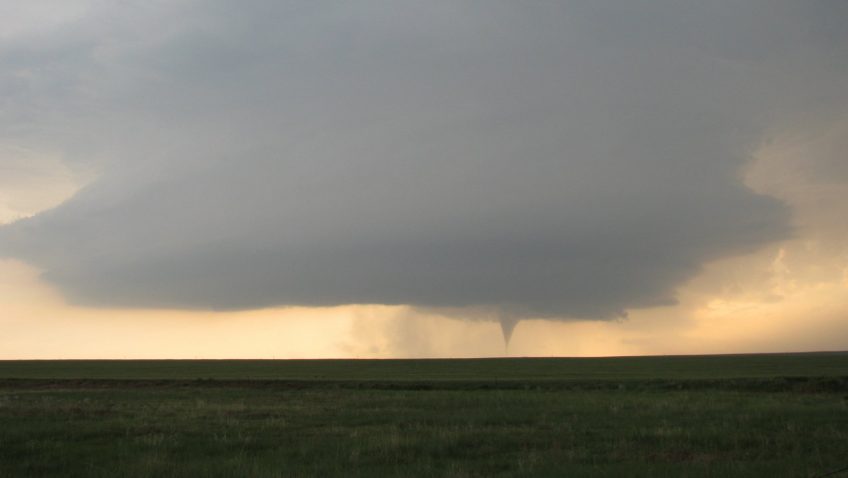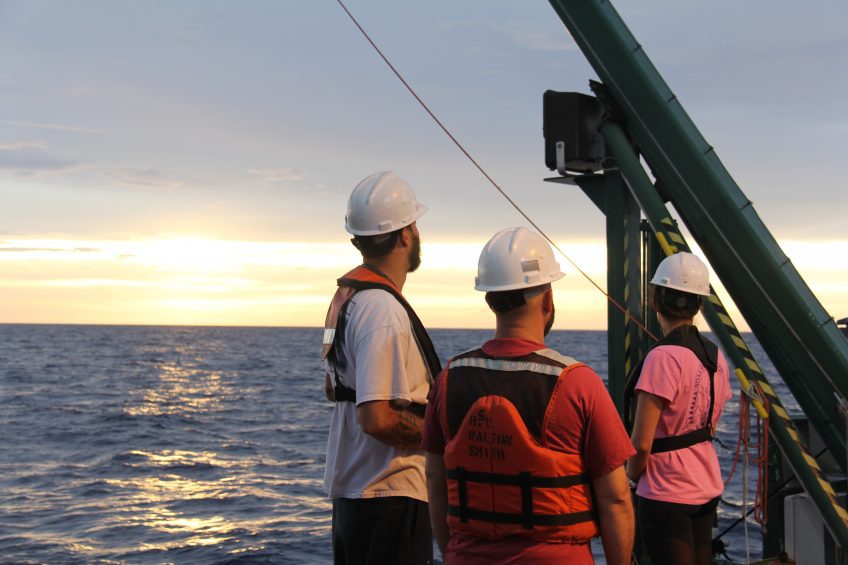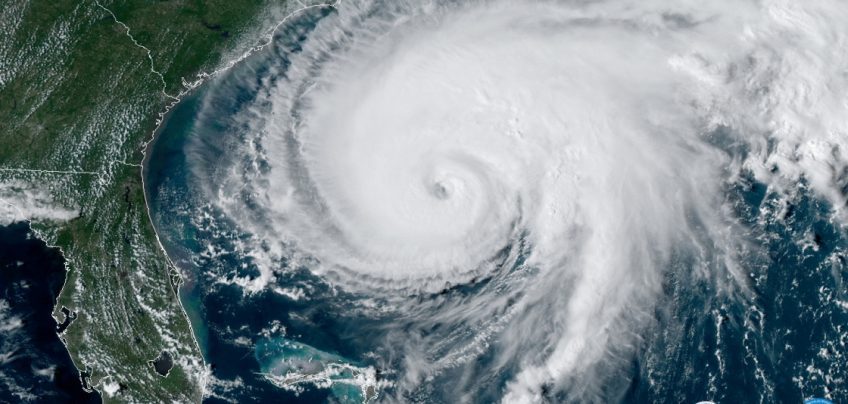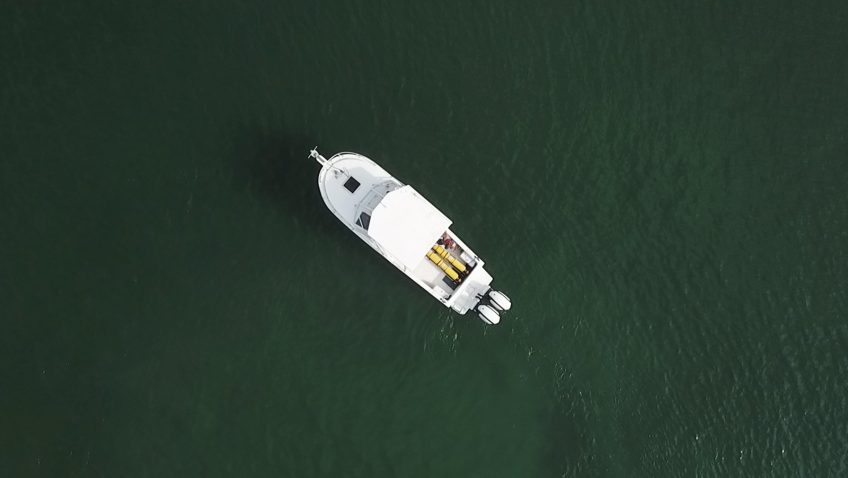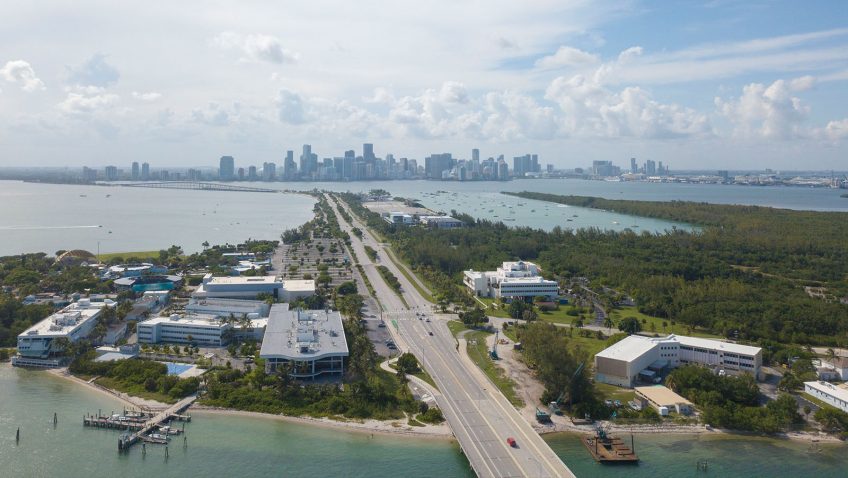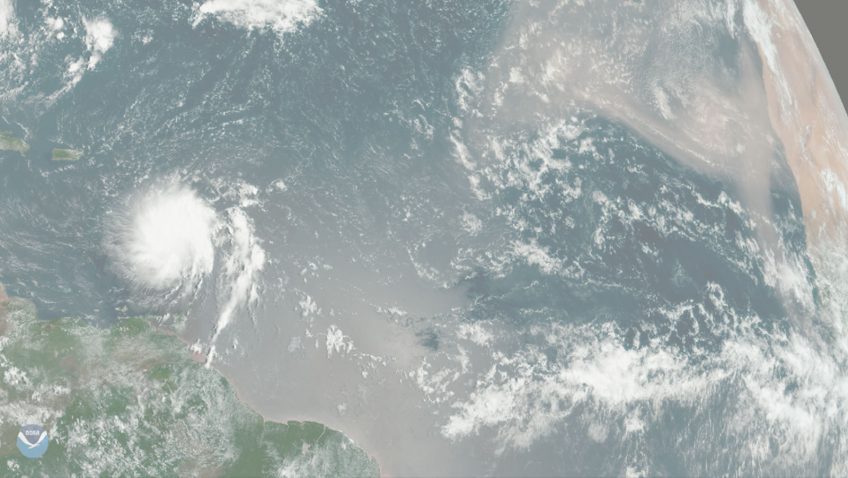Bringing New Technologies to Fisheries Surveys with the Northern Gulf Institute
From March to May, NGI Postdoctoral Associate Sean Anderson is taking part in two legs of a NOAA Fisheries survey in the Gulf of Mexico on board NOAA Ship Pisces. The NOAA project, “Environmental DNA Enhancement of Fisheries Independent Monitoring Cruises for Ecosystem Based Fisheries Management”, seeks to improve ecosystem-based fisheries management (EBFM) with the use of environmental DNA (eDNA) sequencing. Camera traps (pictured) placed at the seafloor in the Gulf of Mexico capture video of passing fish, while bottles collect seawater that the fish have passed through, leaving behind DNA traces.
